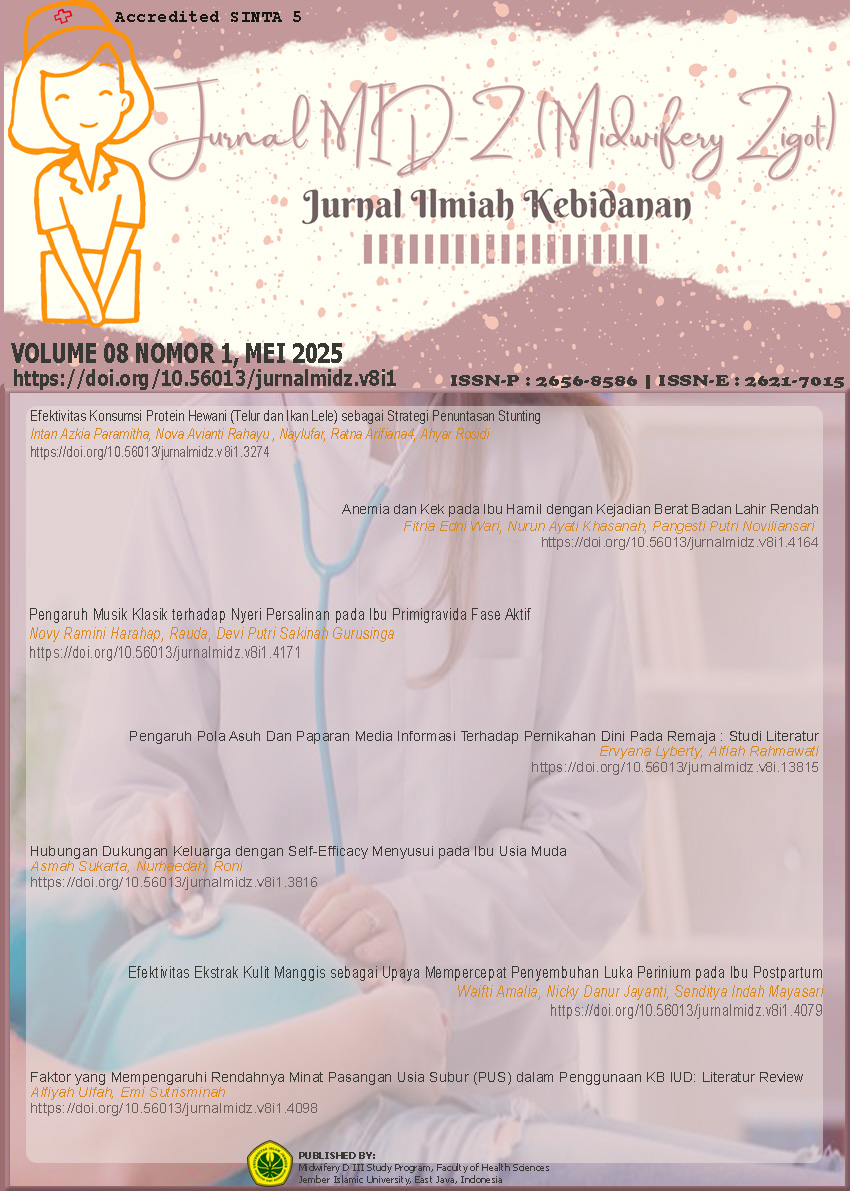Efektivitas Konsumsi Protein Hewani (Telur dan Ikan Lele) sebagai Strategi Penuntasan Stunting
DOI:
https://doi.org/10.56013/jurnalmidz.v8i1.3274Abstract
Based on the 2022 Indonesian Nutrition Status Survey (SSGI), the national prevalence of stunting was 21.6% and Central Java was 20.8%, with the highest prevalence in Central Java and the highest prevalence of stunting in young children in Pekalongan Regency at 23.1%. Growth retardation is a condition where the height or length of a baby's body becomes shorter than their age. Providing additional food to vulnerable groups is a complementary strategy to overcome nutritional challenges. Providing additional nutrition to babies is one effort to meet the nutritional needs of babies so that they can achieve optimal growth and development. This study is a quantitative study with a cross-sectional design that aims to determine the effectiveness of animal protein intake (eggs and fish) on stunted babies. The study was conducted in August by providing food in the form of cooked egg protein and fish to 30 respondents for 30 days. Univariate analysis used frequency distribution, and bivariate analysis used chi-square. The results showed improved nutritional status and decreased stunting before and after the intervention. The statistical test produced a p-value of 0.039, which shows that animal protein (eggs and fish) has an effect on stunting.
Downloads
Published
How to Cite
Issue
Section
License
Copyright (c) 2025 Intan Azkia Paramitha, Nova Avianti Rahayu , Naylufar Naylufar, Ratna Arifiana, Ahyar Rosidi

This work is licensed under a Creative Commons Attribution-ShareAlike 4.0 International License.
Jurnal Mid-Z (Midwifery Zigot) Jurnal Ilmiah Kebidanan memberikan akses terbuka terhadap siapapun agar informasi dan temuan pada artikel tersebut bermanfaat bagi semua orang. Semua konten artikel Jurnal Mid-Z (Midwifery Zigot) Jurnal Ilmiah Kebidanan dapat diunduh secara gratis tanpa dipungut biaya sesuai dengan lisensi creative commons yang digunakan.

Jurnal Mid-Z is licensed under a Creative Commons Attribution 4.0 International License





















